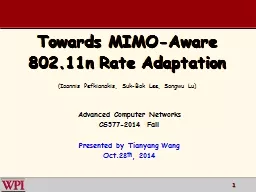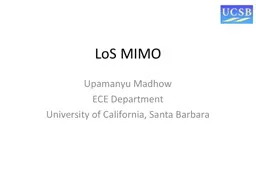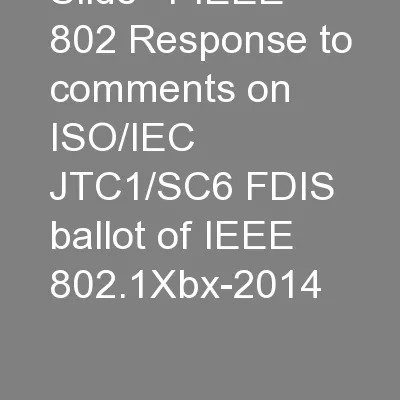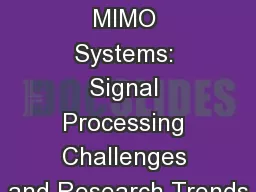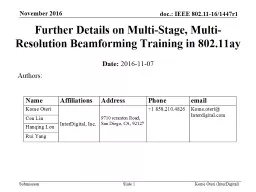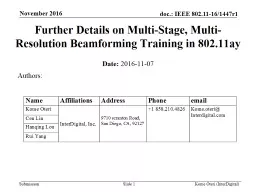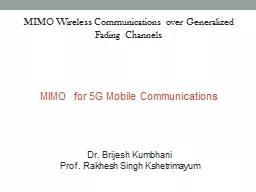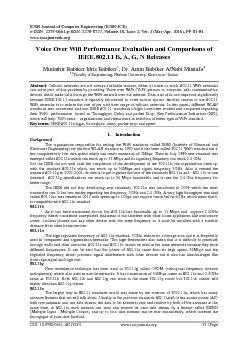PPT-Towards MIMO-Aware 802.11n
Author : trish-goza | Published Date : 2019-03-14
Rate Adaptation Advanced Computer Networks CS5772014 Fall Presented by Tianyang Wang Oct28 th 2014 Ioannis Pefkianakis SukBok Lee
Presentation Embed Code
Download Presentation
Download Presentation The PPT/PDF document "Towards MIMO-Aware 802.11n" is the property of its rightful owner. Permission is granted to download and print the materials on this website for personal, non-commercial use only, and to display it on your personal computer provided you do not modify the materials and that you retain all copyright notices contained in the materials. By downloading content from our website, you accept the terms of this agreement.
Towards MIMO-Aware 802.11n: Transcript
Download Rules Of Document
"Towards MIMO-Aware 802.11n"The content belongs to its owner. You may download and print it for personal use, without modification, and keep all copyright notices. By downloading, you agree to these terms.
Related Documents

